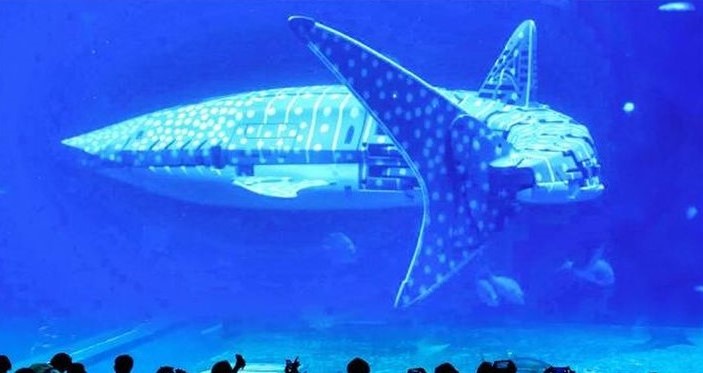Jakarta, Indonesia Sentinel — A Chinese aquarium has stirred controversy by featuring robotic whale sharks instead of live creatures, prompting mixed reactions on social media. While some visitors felt deceived, others praised the innovation as a step toward marine conservation.
According to South China Morning Post, a lifelike robotic whale shark was spotted gliding through the waters of Xiaomeisha Sea World in Shenzhen, Guangdong Province. The video went viral, igniting heated discussions online.
Xiaomeisha Sea World in Shenzhen reopened on October 1 2024 after a five-year renovation, showcasing a whale shark star in its massive tanks. However, visitors were surprised, with some disappointed, to discover that the majestic creature was actually a human-made robotic replica.
Sea World stated that it invested millions of Chinese yuan in developing the robotic whale shark and defended that it was to comply with a 2019 Chinese law prohibiting the trade of live whale sharks.
However, many visitors still expressed their disappointment, feeling misled after paying the steep entrance fee of 20 yuan ($70). Several voiced their dissatisfaction on review platforms and demanding refunds.
Despite the citicism and disappointment from the visitor, some others applauded the aquarium’s approach. “This is a great alternative to showcasing large marine creatures without confining them to tanks,” one commenter wrote. “Rather than disguising the robotic whale shark’s identity, the aquarium should use this opportunity to educate the public on animal protection.”
Robotic Whale Sharks Not a First in China
This isn’t the first time a Chinese aquarium has opted for robotic marine animals. A similar robot made its debut at Shanghai Haichang Ocean Park in 2022.
Developed by Haichang Ocean Park Holdings Ltd in collaboration with Factory 111 under China Aerospace Science and Industry Corporation, the 4.7-meter-long robot weighs 430 kilograms and mimics the movements of a real whale shark.
Cost-Effective and Conservation-Friendly
While the robotic whale shark costs millions of yuan or a hundreds of thousands of dollars, it is significantly cheaper than maintaining a live specimen. Caring for the world’s largest fish in captivity can cost over $14 million, according to marine experts.
Coachella 2025 Lineup Revealed: Lady Gaga, Green Day, Post Malone, and Travis Scott to Headline
The high costs stemmed from the need to maintain optimal conditions for the sharks’ survival. Aquarium operators must ensure precise water quality, temperature control, and ample space to support the whales’ natural needs. However, confined spaces like aquarium tanks are often inadequate for their well-being.
“While whale sharks can live between 80 and 130 years in the wild, they often survive less than five years in captivity,” said Li Jianping, dean of the Academy of Future Ocean at China Ocean University.
Legal and Ethical Implications
A spokesperson for Shanghai Haichang Ocean Park noted that capturing whale sharks is prohibited in China, as the species is classified as a second-class protected national species. Using robotic replicas allows aquariums to avoid harming marine life while promoting ocean education.
Aside from many disappointment from visitors, Legal experts emphasized that the aquarium has not violated any laws, as long as it does not falsely advertise live whale sharks.
While some visitors to Xiaomeisha Sea World express disappointment and demanded refunds, others supported the aquarium’s commitment to animal protection, provided that the public is informed in advance about the robotic exhibits.
(Raidi/Agung)


























